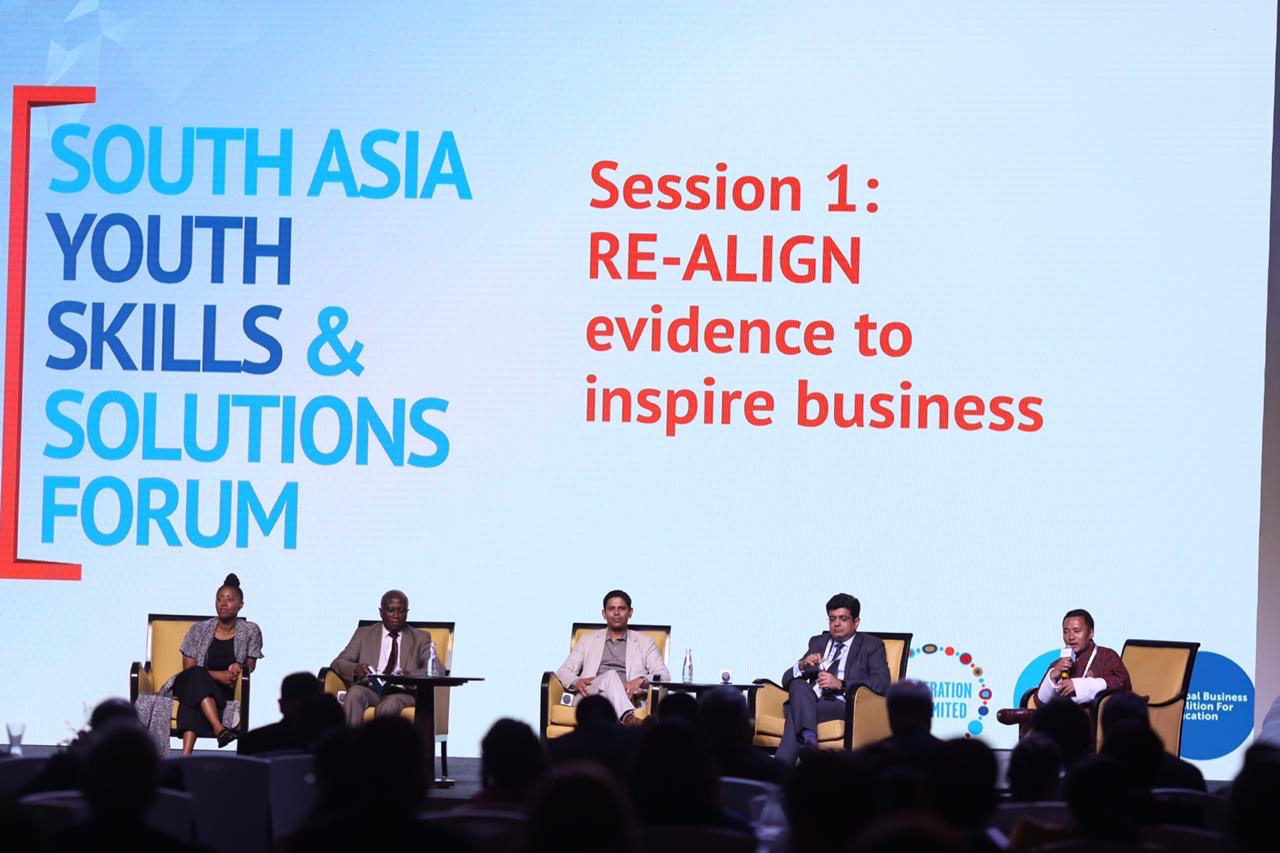Preparing South Asia’s Youth for the Future of Work

This week I’m in South Asia – home to the largest youth population in the world, with half of its 1.9 billion people under the age of 24. These young people, like many of their counterparts, are facing a massive crisis: in an age of rapidly-changing technology and automation, more than half of them are in danger of being left behind because they won’t have the basic skills needed for the future workplace.
That’s the alarming backdrop to the South Asia Youth Skills and Solutions Forum in Mumbai. Hosted by the Global Business Coalition for Education (GBC-Education) alongside UNICEF’s Regional Office for South Asia and Generation Unlimited, the forum brings together leaders from government, youth and the business community to find new solutions to the region’s education and skills emergency.
The forum is crucial because, right now, the future of hundreds of millions of young people is at a crossroads. They are passionate and ambitious, desperate to learn and succeed. Nearly 100,000 young people enter the job market every day in South Asia. But they are being let down by systems which fail to provide many of them with the basic skills they need to thrive in 21st-century jobs or contribute to society.
Many youth in South Asia feel their education systems are outdated and do not prepare them for employment. In a recent UNICEF poll of 32,000 young people in the region, 26% cited lack of work experience as a reason and 23% said there are inadequate support services to improve their employability.
In fact, if nothing changes, on current trends, only 46% of South Asian youth will leave school in 2030 with the skills needed to get a decent job and fulfill their potential. That’s less than one out of every two young people. That’s the shocking finding of a South Asia edition of the Education Commission and GBC-Education’s 2030 Skills Scorecard. It shows the region lagging well below the global average and only ahead of sub-Saharan Africa in ten years’ time.
Bhutan, Sri Lanka and Bangladesh top the list in the region with more than half of all young people in these countries projected to leave school with basic skills in 2030, with 81%, 61% and 55% on track, respectively.
Conversely, in India, where the forum is being held, only 19% of school-age children are currently on track to complete secondary school and reach the learning benchmarks they need to transition into good jobs. And by 2030, that’s predicted to rise – but only to 47%, leaving over half of young people facing a bleak future. Nepal (46%), Maldives (46%) and Pakistan (40%) will trail behind; in Afghanistan, there was not enough data to make a prediction.
These numbers are a wake-up call to governments seeking to create environments for economic growth, innovation, health and social welfare; for businesses seeking the next generation of talent to drive forward their business potential or find solutions to the next generation of pressing challenges; and to young people themselves, seeking to make a contribution to a world in need of their expertise, energy and ingenuity. And that is why it’s vital that urgent action is taken to address the skills gap for the next generation in South Asia if they are to be equipped to successfully enter the rapidly-changing job market.
The challenges in South Asia are not unique. The changes of the Fourth Industrial Revolution and its impact on education, skills and jobs are felt from industrialized countries in North America and Europe and throughout all regions of the world – from Latin America to Asia and Africa.
And the South Asia Youth Skills and Solutions Forum is an opportunity for a diverse group of stakeholders – including young people – to come together and develop new partnerships, policies and programs to unlock investment, increase innovation and scale up solutions that work to provide a new wave of opportunity. The voices of young people are at the heart of this conversation – and they must be central to the solutions. After all, it’s their future.
